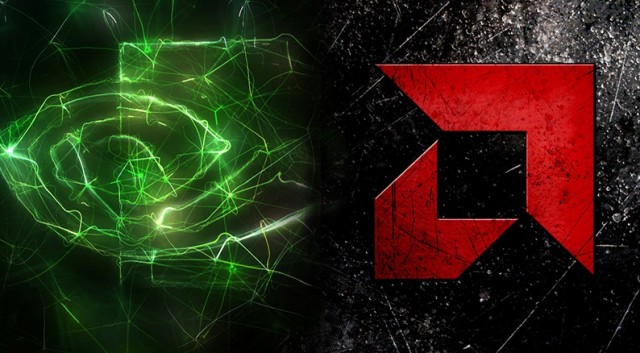For the past couple of years, since Nvidia released their RTX 3000 series of graphics cards (GPUs) and AMD released their Radeon RX 6000 series, the GPU market has been in extremely short supply (at least for us regular gamers). The primary reason is due to a relatively limited supply of the cards being bought up by crypto miners and resellers. As the crypto market has dropped sharply in recent months, GPU supply has been opened up at much lower cost. Up until June, it was nearly impossible to buy a card that you needed, or might it cost you an arm and a leg from some scalper offering.
Today, things have changed. GPUs are in abundance with many selling at below MSRP. The time is right to buy!… or is it?
Some personal considerations
- In immediate debt?
- Rely on a computer that just broke down or might fall apart in the very near future?
- Rely on a computer but it’s slow, hampering your use of it?
- Emotionally willing to wait a month or two?
- Have no problems with current computer, but feel an upgrade would help in games?
- Love to upgrade and have the money to do so every year or two?
Let’s play devil’s advocate and look at the two main points of view.
Now is a good time to buy
In general, now is an excellent time to buy if you don’t want to wait a couple of months to get the next best thing and are not the type of person to need the latest and greatest. You especially probably don’t need the next generation of GPUs as the current generation will run just about any game even at 4K with RTX. If you want 4K and RTX at higher refresh rates, then a wait might be worth it. Prices on current generation cards may drop further, but they probably won’t drop much more than they are now and inventory is starting to dry up for many variations.
However, if you’re like us who are ok with their current systems but crave the latest and greatest for our mod heavy, poorly optimized, games that need sheer brute force performance, or are eager to shave off a few more seconds on that video compilation time, then a wait would perhaps be worth it.
Now is NOT a good time to buy – ‘Futureproofing’
Waiting just a couple of months can often be a good choice to ‘future proof’ your system. Yes, you can future proof your system. Don’t listen to those naysayers that suggest ‘you’re always going to be waiting with that mindset’. This is a shortsighted answer if you follow some basic reasoning, like how close is the next generation of products, how long will it be after their release before something once again worthwhile arrives, and what’s the cost difference between generations if you wait to save some cash on dropping prices or last gen considerations?
For example, the coming CPUs by AMD are going to be the first (for AMD) to have DDR5 memory, PCIE 5.0 bandwidth, more cache on the CPU and GPU (great for games), and other technologies that’ll be valuable to have for years. Sure, I could ignore all that and get a DDR4 system now, but then I’d just want all these new technologies a year from now when I can wait just another month to get them instead. The products coming out in a year are not going to have this many new technologies. DDR6, PCIE 6.0, etc., won’t arrive yet for several years.
Cost is going to be a big decision maker of course. Last gen products and ones that are a few months old may be a cheaper and thus a better buy. However, we’ve found that the price difference is often not enough to justify a near-term repeat purchase. Purchasing a decent DDR4 64GB option will set you back about $200 at the low end. DDR5 64GB is about $330 or so at the low end. If you buy DDR4 64GB now and then a year from now go “shucks, I want to upgrade” you’re doing it all over again (perhaps at a lower price, but don’t forget you’ll need a motherboard with DDR5 support), instead of just getting the higher priced (but better performing) DDR5 now and having that last for years instead.
This is what we mean when future proofing your system can make sense. There are of course other variables as the years go by, like improving DDR5 performance that may sway you to wait yet another year, new technologies that may need another year to become stable with improved drivers, etc., but that’s really getting into the weeds at that point.
Decide to wait for that new RTX 4090 GPU? There’s a catch…
While last generation sucked a lot of power from your wall outlet, this upcoming generation for both Nvidia and AMD are going to increase power demand considerably, and the quality of that power will need to be considered. There are rumors of cards upwards of 600 watts or more (though some of these may be test boards and not actual final retail specs). Graphics cards are increasingly exhibiting millisecond power spikes call ‘transients’ that can, for just a few milliseconds, draw 2x or even 3x the power. Power supplies are designed to handle these spikes, but the next generation of graphics cards are going to have extreme spikes.
The power supply is always going to be the most important component for system stability. If you’re willing to wait for the next generation of graphics cards, by the time they are available the new ATX 3.0/12VHPWR power supplies that handle large transient spikes will also be available. Especially if you’re going to be purchasing a top end RTX 4090 or RX 7900XT once they are available later this year, you’ll want to pickup an ATX 3.0/12VHPWR power supply of at least 1000 watt capacity.
But what about Intel ARC?
ARC by Intel is an interesting new option coming to the GPU arena to fight alongside Nvidia and AMD. We personally would only recommend these GPUs as a potential budget solution, which several early previews appear to verify. But there’s too many unknowns yet about how the ARC GPUs will perform in all scenarios and driver support will take years to fully develop. The industry does need more competition, so Intel ARC on the stage can overall only be a good thing. Should you buy it, though? Well, at this time, it’s safe to say necessarily recommend buying any ARC-based GPUs or laptops or PCs released in 2022. But do keep an eye out for 2023, when a fuller picture of the ARC’s capabilities and software/hardware roadmap will be clearer.
Which events coming up soon might tell me more?
HotChips 34:
This event is coming up quickly, but it’s online and won’t require as much planning to attend. HotChips is for people who really like to geek out over GPUs, motherboards, and other architectures. Much of the discussions from this event won’t necessarily make it to the headlines, but for news sites that dissect the presentations, the show may be like a compass needle that reveals some architectural capabilities from Intel, Nvidia, and AMD.
Nvidia GTC 2022:
Coming up in mid-September online, NVIDIA’s next GPU Technology Conference (GTC) will focus on artificial intelligence and the metaverse. However, that doesn’t necessarily mean there won’t be a hardware announcement, such as a new or updated GPU, that may impact gamers.
CES 2023:
There are few shows in a calendar year, except, arguably, for Computex Taipei, where there’s more fresh news rolled out about hardware and software products than CES, which takes place at the start of the year. Nvidia, AMD, and Intel will certainly come prepared with plenty of fresh news for what to expect for their GPUs product lines and more in 2023.
Summary
At the end of the day, buy what feels right for you! We hope these guidelines, resources, and considerations will make your purchasing option a stable and fast one for years to come. Let us know what you purchase in the comments below or on social media!



